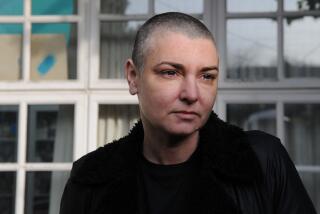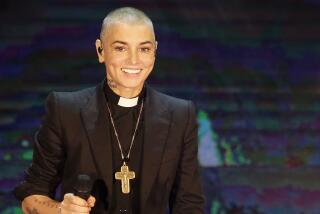Even in Death, No Peace for Actor’s Son
- Share via
Police in Rome have seized what they believe to be the cremated remains of actor Carroll O’Connor’s son, which may have been improperly interred in an American church.
The mother superior of the Cistercian order that runs Santa Susanna Church alerted the Carabinieri paramilitary police to a stone slab memorial to Hugh O’Connor, Sgt. Giuseppe Sorricelli said.
She told them she suspected that remains had been placed under the slab without the church’s authorization, Sorricelli said. After police removed the stone, on which was written “Hugh Edward O’Connor, 1962-1995,” they discovered a small box evidently containing human ashes.
Hugh O’Connor shot himself in March 1995, despondent over marital problems and a struggle with drugs.
The elder O’Connor, who campaigned for a law that allows families of drug users to sue drug dealers for “harm caused by illegal substances,” was honored Sunday at the Catholics in Media Associates’ award ceremony in Beverly Hills. He received the Lifetime Achievement Award, and was one of several actors recognized for their work that “made clearer the word of God.” Calls to O’Connor’s publicist for comment were not returned.
Hugh O’Connor was born in Rome and was adopted while his father was filming the movie “Cleopatra.”
The matter appears to go to the heart of a dispute over control of the 400-year-old church, which has served American Catholics in Rome since 1922.
Police said they had been called by the church’s “legal owner,” the mother superior of the Cistercian sisters cloistered next door.
The nun told police the remains had been placed there without authorization. But the American Paulist fathers who run the church dispute the order’s claims of authority, and say they approved the interment.
The Vatican in 1991 decided that the sisters did not own the church, its pastor, the Rev. John Foley, said Sunday. But the sisters appealed, and the Vatican has yet to give its final word.
After O’Connor’s death, Foley said, “The family brought me the ashes in a period of mourning and asked me to accept them, in a sense, as returning the gift they received from God to the church.”
He said the O’Connors had donated money over the years, including an offering in Hugh O’Connor’s memory. Interring the remains in the church was the “pastorally correct thing to do.”
“Obviously I believe I was entitled to do what I did,” he said.
Sorricelli quoted authorities as saying it appeared that cemetery officials had not issued a permit for the interment. “You need a thousand documents” to do so, he said, calling the matter a “mess.”
More to Read
Sign up for Essential California
The most important California stories and recommendations in your inbox every morning.
You may occasionally receive promotional content from the Los Angeles Times.













